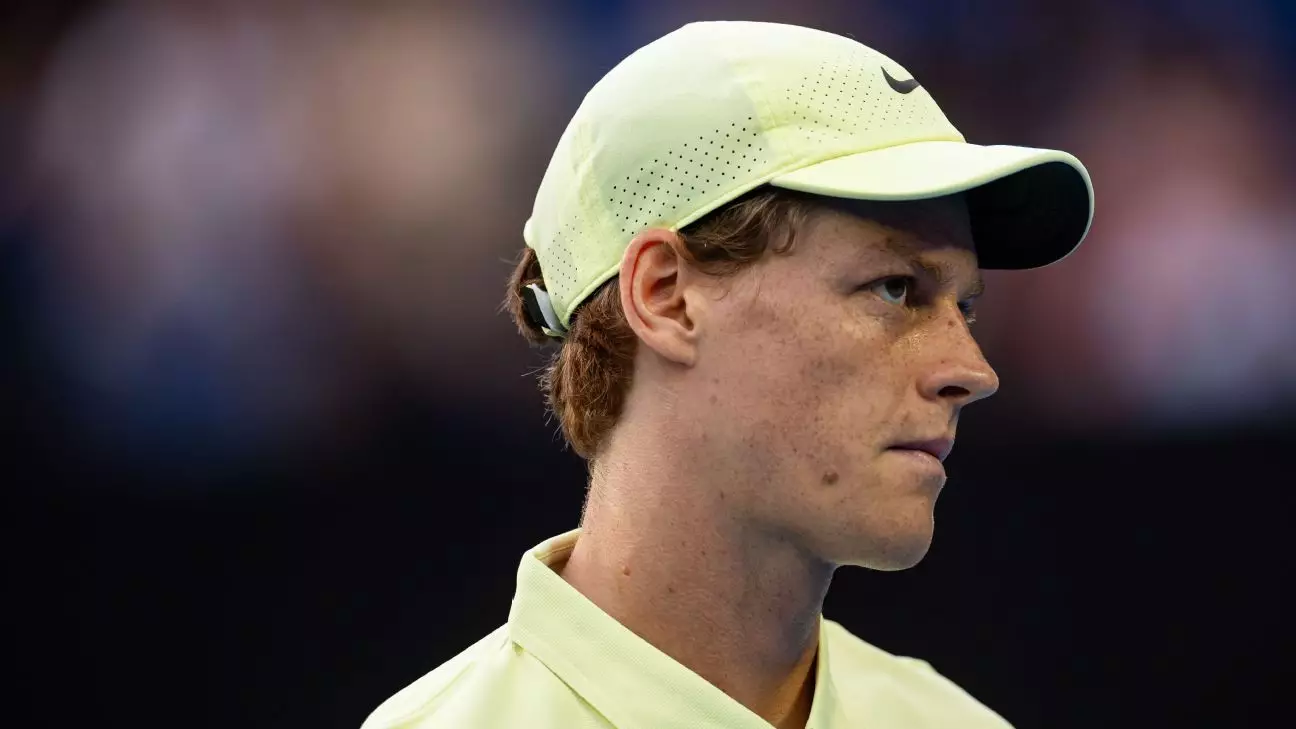At the epicenter of professional tennis, where competition runs high and players often find themselves mired in rivalry, Jannik Sinner’s three-month doping ban unveiled a human side to the sport that transcends mere competition. Just as surprising as the nature of the suspension was the mixed response Sinner received from his colleagues, prompting an introspection that resonates beyond the courts. The Italian player noted the unanticipated messages of support from some, contrasting sharply with the silence from others he considered peers. This division reveals an unsettling aspect of the sporting world—the complexities of camaraderie in the face of scandal.
Sinner’s openness about his emotional landscape during this period highlights an essential truth: athletes, often perceived as invulnerable, grapple with the weight of judgment and isolation. The locker room, typically a hub of support and shared experiences, morphed into a space of unease for Sinner, as comments exchanged between players transformed into covert glances and hushed whispers. The nuanced dynamics of player relationships become particularly evident when reputations and integrity are questioned, pointing to the fragility of connections built within a competitive framework.
Controversy of Competence
The settlement between Sinner and the World Anti-Doping Agency (WADA) stirred an already volatile atmosphere within tennis. Critics argue that Sinner’s lenient treatment raises ethical questions about the integrity of the sport. Accidental contamination from a banned substance, while undoubtedly possible, doesn’t absolve him completely in the eyes of his fellow players. This controversy compels a larger conversation around the adequacy of current regulations and the effectiveness of governing bodies in ensuring fair play.
As Sinner re-enters the professional arena, the contrasting sentiments of respect and skepticism from his peers will serve as a constant backdrop to his performances. The emotional toll this scrutiny takes is sinewed into the fabric of competition, setting the stage for a profound psychological battle alongside the physical challenges he faces on the court. It is no longer merely about winning matches; it is also about restoring one’s standing within a community that is often unforgiving.
The Challenges of Isolation
Sinner candidly described the emotional hardship borne from his inability to support friends during his suspension. This aspect is crucial, as it underscores the interconnectedness of athletes across different sports. The isolation thrust upon him by the ban was not simply professional; it was personal. Relationships forged through shared passions in cycling and motorsport were strained as Sinner found himself sidelined from these experiences, emphasizing the fundamental human need for connection.
As he trained quietly with compatriots and competitors alike during his ban, it became clear that the true test for Sinner was not only about honing his skills but also about maintaining bonds that enrich his life beyond the court. The camaraderie mentioned by his coach, Simone Vagnozzi, along with the relief expressed in supportive messages, highlights a community’s dual nature—it can be immensely uplifting, yet equally isolating.
Preparing for the Clay Court Season
As Sinner progresses to his highly anticipated return at the Italian Open, the impending challenge of competing on clay—a surface he finds daunting—adds a layer of intrigue to his comeback. With only one of his 19 career titles claimed on this particular surface, questions linger regarding his ability to adapt and thrive. Despite the lack of confidence in his clay skills, Vagnozzi offers a tempered optimism based on previous performances. The route to success on clay, marked by resilience and strategic gameplay, will be pivotal for Sinner as he attempts to prove himself anew.
Wednesday’s unveiling of Sinner’s opening match against Mariano Navone signals a fresh chapter. Armed with an impressive 21-match winning streak, the potential for a triumphant return is palpable, yet the undercurrents of tension and expectation will undoubtedly weigh heavily on his shoulders. The media spotlight shines with fervor, not merely on the successes of Sinner but also on the ghosts of the past that linger—a duality many athletes face but few speak about openly.
Looking Ahead
While the specter of scrutiny looms large, Sinner’s narrative serves as a compelling case study for resilience in sport. His path through the challenges of a doping ban and the subsequent reintegration into competitive tennis highlights not just his individual fortitude, but also the significant interplay of ethics, camaraderie, and identity within the sporting world. As he gears up for what may remain a pivotal moment in both his career and the broader tennis community’s conversation about integrity, one thing stands clear: Jannik Sinner’s journey is far from over, and the clarity he seeks will demand both exceptional skill and unyielding resolve in the face of adversity.

